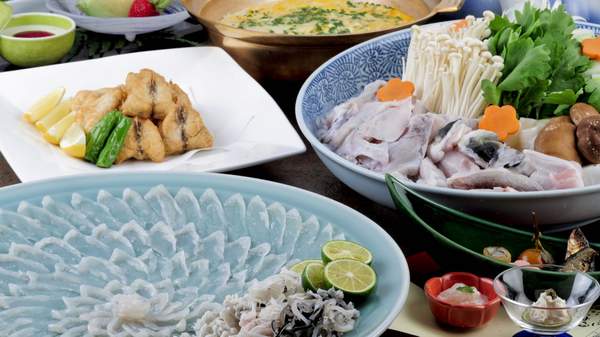Overview
Japanese food is one of the most popular cuisines worldwide, and it's no wonder. It's flexible, healthy, often served fresh, presented beautifully and perhaps most importantly, it tastes fantastic.
You can get a box of takeaway sushi or a bowl of ramen all over the world, but certain elements and specialties of Japanese cuisine have yet to take off worldwide. Whether it's down to unique ingredients, well-guarded local knowledge or a certain…flair that turns away more conservative palates, these dishes you need to seek out in the land of the rising sun itself. So, should you be planning a Japan jaunt, save this guide for some of its lesser-known treats and where to find them.
Goya Chanpuru, Okinawa Prefecture
Starting in the summery and tropical south of Japan, we have the regional specialty of goya chanpuru hailing from sunny Okinawa. Chanpuru itself is an Okinawan stir fry of vegetables and fresh tofu, but the most popular variety comes with a helping of a bitter gourd called goya. The summer vegetable is sliced and stir-fried in oil with pork, eggs and, crucially, Okinawan tofu (which is prepared differently from other tofu). The result is a bitter but healthy meal, rich in vitamin C.
Hanasunrise via iStock
Buri Daikon, Kagoshima Prefecture
Moving north to the island of Kyushu and Kagoshima Prefecture, a popular at-home winter dish made with vegetables and fish, takes our eye. Buri daikon is specifically made with yellowtail, commonly fished in Kagoshima Prefecture, and thick slices of daikon, a Japanese radish — especially a sweeter cultivar called Sakurajima daikon. The daikon is chopped and stewed with yellowtail, sake and ginger, then served with shredded ginger — making for a fantastic winter warmer.
Stossi Mammont via iStock
Horakuyaki, Ehime Prefecture
Ehime Prefecture is home to one of Japan's three major tidal flows, the Kurushima Strait. The fresh seafood that's the main ingredient in horakuyaki is almost exclusively caught in this very strait. Popular in Imabari, horakuyaki is a luxurious dish that's innately connected to the rich maritime culture of the region and is fairly simple to prepare. Commonly made with bream, octopus, shrimps and clams caught in the strait — the catch is prepared, lightly salted, then steamed and roasted in a flat pan called a horaku nabe. It's tender, rich in seafood flavour and a common sight at banquets and celebrations year-round.
ES3N via iStock
Fuku Sashi, Yamaguchi Prefecture
Fuku sashi is Yamaguchi Prefecture's regional spin on the internationally known dish of fugu, sashimi of the highly poisonous pufferfish. It's a dish that can only be prepared by accredited chefs since one wrong cut can make the meat of the fish fatal when consumed. When a chef in Yamaguchi Prefecture is qualified to serve fugu, it's used in this locally popular dish. The fish is sliced so it's translucently thin, then served with ponzu sauce — made with soy sauce and citrus juice. It's also popular with sliced chives or grated radish. While popular, a decline in fugu stock has made the dish reserved for special occasions.
TokyoViews via Flickr
Tekonezushi, Mie Prefecture
Local meals often have a simple origin, and that's the case with tekonezushi, tracing its origins to being a simple meal that fishermen could prepare while still out on their boats. Not far from Japan's largest cities, the waters of Mie Prefecture are busy with fishing boats, often hunting skipjack tuna. Hence, local fishermen and now restaurants often prepare tekonezushi. All it takes is tuna or bonito sashimi marinated in soy sauce and placed on a bed of vinegared rice with a sprinkle of nori (dried seaweed) and shiso (perilla) on top.
Hideya Hamano via Flickr
Hotaruika no Sumisoae, Toyama Prefecture
In central Japan where the mountains meet the Sea of Japan, Toyama Bay is home to a population of stunning firefly squid, which is the centrepiece of hotaruika no sumisoae. Traditionally residents of deep water, these luminescent cephalopods make quite the sight in the shallows. Often served in early spring, coinciding with the fishing season, this dish is prepared by boiling the squid in salted water and then serving with leeks and a generous pour of vinegared miso (miso, vinegar, hot pepper and sugar).
Kiritanpo Nabe, Akita Prefecture
Nearby in Akita Prefecture is kiritanpo nabe, a local take on hot pot that dates back to when loggers used to climb the region's mountains in search of timber. The key carbohydrate base is kiritanpo — rice that has been boiled, mashed and grilled on a cedar skewer. Cooked in a cylindrical shape, they're added to a boiling hot pot with chicken bone broth and a mix of ingredients. Typically, you'll see sliced root vegetables, mushrooms, thin noodles and chicken as well as sake, salt and soy sauce. It's often served for celebrations and is the star dish in local festivals in the region.
Milk and Dairy Products, Hokkaido Prefecture
Japan's northernmost island (and prefecture) of Hokkaido might be most famous for its snow resorts, but the area is also home to Japan's dairy industry. The climate is ideal for dairy production and is where over 50% of Japan's milk originates. Supposedly, the milk has a rich, vanilla-esque flavour. As such, there are all sorts of treats to try. Lavender soft serve ice cream, cheese, butter, bread and milk jam (the Japanese equivalent of dulce de leche) are some of the most popular treats, all served in restaurants and the regions working dairy farms.
Discover more and start planning your trip to Japan at the Japan National Tourism Organization website.
Header image: Green Planet World via iStock. Body images courtesy of the Japan National Tourism Organization unless specified otherwise.
